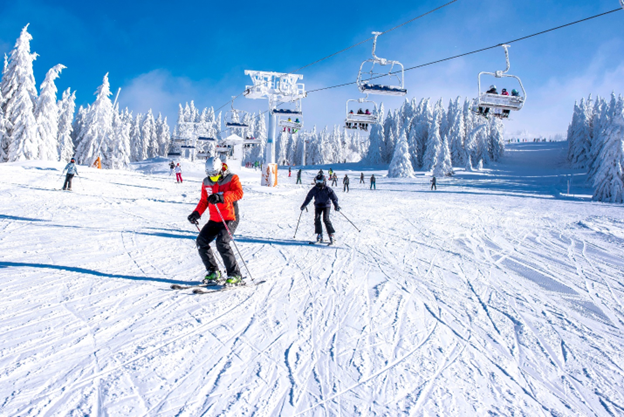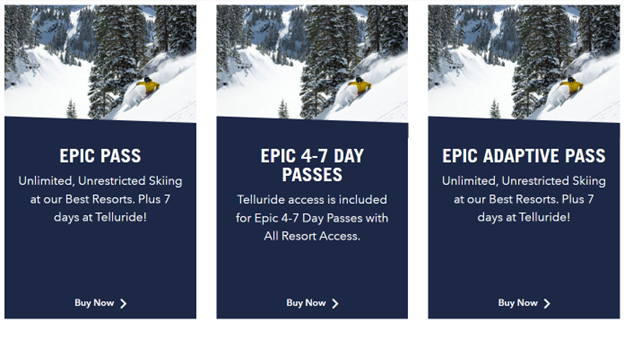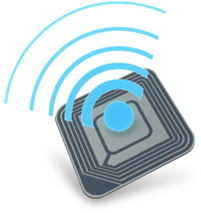Go Directly to the Top of the Mountain! | How Fathym helps the Ski Industry with its Season Pass Technology
December 7, 2022 by Kim Loomis, Product Owner @ Fathym

In this article
- Season passes are good economics for both consumers and resorts
- How pass technology works
- How Fathym helps to bridge disparate resort systems and ensure data integrity
As the calendar winds down for the year, the weather is increasingly colder, the snowfalls are more frequent, and the powder is really starting to pile up in the Rocky Mountains. And that means one big thing – the ski resorts are open! There is a long pilgrimage of rabid skiers from the Colorado front-range (and honestly, from around the world) to be the first in line to get up the snow-covered, well-groomed slopes of renowned resorts like Telluride, Vail, Breckenridge, and so many more.
Season Passes

As a skier, one of the great ways to enjoy the best of skiing is to purchase a season pass. A pass allows you to purchase upfront the ability to ski for unlimited and/or limited days at specific resorts, all the while enjoying other perks like discounts on lodging, schools, rentals, food and beverages.
The Epic Pass is one example of these popular ski passes; other passes can be read about here. The Epic Pass has packages that work at a myriad of resorts around the world. For example, if you know you want to ski at the amazing Telluride Ski Resort in southwestern Colorado you have different choices of pass packages which include that resort.
Ski Passes Make Sense for the Consumer, and Resorts

You certainly wouldn’t be alone if you purchased a pass.
During the 2021-2022 season, Vail Resorts (which owns the Epic Pass) sold 2.1 million of those passes. The passes are a big deal and big money for the resorts. It’s a way for them to continuously attract skiers.
A skier is thinking the pass is economically smart – “If I ski just 4 or 5 times, I’ve paid for the pass. And really, I ski at least 10-12 times a season. So, I’m getting a great deal.” And this is proven out by the cost of 1-day lift tickets, which reached $239 in December 2021! Suddenly, the cost of a season pass for $899 seems reasonable and economical.
Ski Passes Keep the Consumer Coming Back
A resort is thinking the pass is more of a continuous shot of revenue in the arm for them – drawing the skier in to not only ski multiple times, but to ski for multiple days at a time, obtain lodging and extend their ski experience, and, consequently, buy food and beverages. And depending on skill level, the new skier might need lessons from the resort’s ski school. And the skier might need to rent equipment, too.
So, the math just works - skiing plus, plus, plus, is money in the bank for the resorts. In 2021, while an individual resort like Telluride made nearly $21 million in revenue, Vail Ski Resorts (a conglomerate) made $2.0 billion. Gliding over slippery snow is indeed big business.
Fathym’s Role in Resort Systems
Fathym helps the partners of Epic Pass to successfully communicate.
Fathym has a history of working with the digital infrastructure that Telluride Ski Resort employs – RTP ONE. Telluride has employed Fathym to manage the means to receive information from Vail and allow it to be ingested successfully into Telluride’s systems. Fathym created an integration that handles the import of customers, customer profile details, images and products. This allows regular and accurate communication between Vail Resorts and Telluride to happen.
Like many companies, Vail is constantly updating its systems and the data it captures, stores, and produces. When these changes happen, Fathym works to ensure that the integration mechanisms are updated.
The latest set of changes that Fathym assisted with revolved around the move from bar coding technology to RFID. Fathym helped Telluride ensure that ski passes embedded with RFID, and which no longer had bar coding, can be successfully processed and allow skiers to seamlessly get on the lifts.
Pass Technology
Did you ever wonder how the ski pass works? How does each resort that you go to know exactly what benefits you purchased, which ones you’ve redeemed and which ones you still have to use? How does that information get passed between so many different resorts, not all owned by the same entity?
Behind the scenes, there is an enterprise infrastructure that allows skiers to have so many benefits.
Ski passes, like the Epic Pass, are simply electronic ski tickets. They have some sort of means on them or in them that allows communication to the resort’s digital infrastructure.
In the past, this has been done by means of a bar code. You walked up to the ski lift line and the lift operator scanned your ticket with a barcode scanner. The mobile barcode scanners were connected to the resort’s computer/point of sale system via Wi-Fi or LTE and your scanned information was transferred to the resort’s computer system.

Now, the technology has moved to use RFID (radio frequency identification). In your ski ticket there is a tiny RFID tag, or more specifically, a transponder. The resort will place various RFID readers, or more technically, the antenna and the transceiver, at different locations – at the lift gate, at the entrance to the lodge, at the restaurant, at the ski school, etc. You simply walk by or near a RFID reader, and it will take note of your pass. The reader uses radio waves to transmit signals that activate the RFID tag. Once activated, the tag sends a wave back to the antenna, where it is translated into data. That data is then sent to the resort’s computer system via Wi-Fi or LTE.

Using Your Pass at Vail Resorts
Imagine: You’ve had a great time at a Vail Resorts location. Your information was communicated throughout the resort. You were able to rent your equipment plus your buddy’s for “rent one get one half off” – you swiped your pass card for the benefit.
You signed up at the ski school for a free lesson after using your pass. You’ve been able to get on the ski lifts with a read of your pass and get in some good runs.
When you were tired and cold, you stopped at the restaurant mid-mountain and bought some coffee and cocoa. You simply swiped your pass card, and you got 10% off your beverages.
Later, when the skiing is done, you relax in your room which again, by using your pass, you booked at a discount.
But all that activity was at that one Vail Resorts resort. What role does all the information from this resort play when you decide to ski at a different resort within the confines of the ski pass? How is the data shared between resorts?
Within a conglomerate like Vail Resorts, which owns 37 destination properties, sharing information is easier. It’s easier for all the companies under their one umbrella to work from a main or shared digital infrastructure. But when Vail Resorts, which owns the Epic Pass, creates a relationship with an external entity like Telluride, how does the information flow work?
Using Your Pass at Partner Resorts
As part of the relationship between resort entities, it must be understood what data is available, what data needs to be transferred back and forth, and how to read that data. The digital infrastructure at Vail Resorts is not the same digital infrastructure at Telluride.
Therefore, their computer systems are not going to easily “talk” to each other. Some sort of interpreter must get involved.

As a simple example, the system at Vail may hold a user’s full name as two fields, first and last. But Telluride’s system may hold a user’s name as first, middle and last – three fields. When data is passed from Vail to Telluride that data schema has to be understood and mapped. Telluride utilizes a disciplined data transformation process that Fathym crafted to break the name into the expected fields. If data is not available or problematic, the resort is still able to process the information accurately and timely.
Communication Between Resorts
On a regular daily basis, Vail pushes data to the external partner resorts like Telluride. Telluride grabs that data and starts processing it. It checks the data for completeness and accuracy. Exception reporting is done on records that have non-conforming data. Each record that cannot be processed is inspected, investigated, and remediated. For any records that require deeper research, Telluride will work with Vail Resorts for resolution.
Communication Within the Resort

Telluride loads that data into their system so they may process pass holders. When Jane gets in the lift line for the steep and deep run known as “The Plunge,” her Epic Pass is read.
Telluride’s system checks what benefits Jane has purchased. It ensures that Jane has ski days remaining on her pass so she can proceed onto the lift and up the slopes for the day. If Jane doesn’t have Telluride benefits (say, she bought a pass with no Telluride benefits) or Jane has used up all her Telluride benefits, the system will alert the lift operators to direct her to Customer Service. There, she can purchase additional Epic Pass benefits or just Telluride-specific benefits.
Single Source of Truth
Each resort must remain the “single source of truth” for the pass holders.
At any time, a pass holder contacts Vail Resorts, Vail Resorts must be able to give the pass holder a real-time current view of their pass – what they bought, what they have redeemed and what benefits remain to be used at their resorts.
As an external partner, Telluride must be a single source of truth for pass holders that recreate at Telluride and utilize their facilities. Given that Telluride is outside of the Vail Resorts umbrella, it must be vigilant as to what aspects of the Telluride benefits the skier uses. The benefit of Telluride being included in the Epic Pass is to avail local and destination skiers of another great resort, thus making the pass even more attractive to consumers. However, the burden of monitoring usage of the pass at Telluride falls squarely on resort’s shoulders.
Having a single source of truth for each partner ensures that each business is operating based on standardized, relevant data across the organization. It allows each business to be able to communicate accurately with their shared customer base.
Data Integrity
Bottomline, data integrity is of utmost importance to all the resorts. Fathym ensures that ski pass data is complete, accurate, available, and timely for Telluride. The data integration that Fathym put in place allows two different systems to “talk” successfully. This allows the skiers to have the best possible experience at the resorts while the technical infrastructure remains mostly transparent to them. It allows the resorts to accommodate and service the skiers in the most efficient and effective manner with top-notch operations.